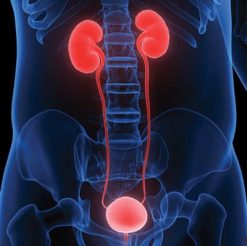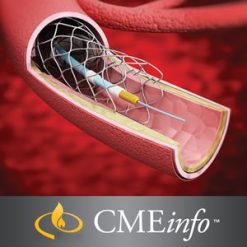Kumarhane heyecanı yaşamak isteyenler bahsegel dünyasına giriyor.
NSH Digital Pathology Certificate Program 2025
$65,00
This Product is shared via google drive download link, So please share your correct Gmail id while placing the order .Please note that there are no CME points or certificate associated with this course Samples for Courses Can be found here : Free Samples Here!
Digital Pathology Certificate Course
The National Society for Histotechnology, in collaboration with the Digital Pathology Association, developed this online, self-paced certificate program to increase competency and improve knowledge in whole slide imaging and digital pathology in order to meet the educational needs of the growing community of individuals involved with and utilizing this technology.
The National Society for Histotechnology, in collaboration with the Digital Pathology Association, developed this online, self‐paced certificate program to increase competency and improve knowledge in whole slide imaging and digital pathology in order to meet the educational needs of the growing community of individuals involved with and utilizing this technology. The field of digital pathology has rapidly expanded within the last couple years with massive adoption and growth in popularity. The global digital pathology market is expected to reach USD 979.0 million by 2025. It has become necessary to have individuals who are well trained involved in the process from histology technicians and technologists to digital scanning technicians to the pathologist and researchers.
What Type of Content Is Included?
- ~20 hours of webinar learning content
- Templates, SOPs and other resources to use for your implementation and digital pathology growth
- Comprehensive literature resources relevant to each module for further understanding and research
- Assessment questions and checkpoints to ensure knowledge retention
Who is this course for?
Histotechnologists, Histology Technicians, Cytotechnologists, Cytology Technicians, Digital Scanning Technicians, Pathologists, Pathology Residents, Pathology Assistants, Research Scientists, Educators, Algorithm and Software Engineers, Individuals associated with or responsible for Laboratory Informatics, or anyone who is interested in or performing any aspect of digital pathology, whole slide imaging, image analysis, and health care data management.
Learning Modules
The course consists of seven learning modules with the end goal of the student being awarded a Certificate of Completion to recognize this achievement. The course modules are detailed below.
Module 1: An Introduction & History of Digital Pathology
Participants will be provided an explanation of the goals, processes and overviews of modules.
Define the major Environments – Clinical (academic, private & reference labs), Research and Education of digital pathology
Understand the History/Background/Evolution of Digital Pathology ‐ and be able to articulate the general advantages and disadvantages including the value proposition of digital pathology (e.g. ROI, benefits vs. costs).
Differentiate between Telepathology systems: Static Digital Image Capture, Dynamic or Robotic Image Capture
Module 2: Basics of the Technology
Define whole slide imaging systems, components, framework, hardware and software
Review scanners, viewers and computer monitors
Discuss IT Infrastructure, storage (image life cycle management), databases, interoperability
Discuss the process of image capture, viewing, storage and management
Module 3: Use Cases for Digital Pathology
Identify and discuss clinical, educational, research and histology uses for digital pathology.
Understand future/potential clinical uses and how it will affect the pathology lab.
Explain how use cases could be applied for your current lab practice.
Module 4: Selecting and Implementing a Digital Pathology Solution
Participants will learn how to establish requirements for selecting a digital pathology solution
The module will discuss how to assess digital pathology systems – Hardware & Software (network capabilities)
Review IT connectivity and image storage considerations
A brief explanation of image and pathologist validation
Sample Preparation – Histology
An introduction to best practices/standards
Module 5: Workflow Considerations & Best Practice Standards
Define a workflow that will best fit into your lab environment
Define ‘best practices’
An introduction to understanding what is required for quality and compliance (verification, validation and regulations)
Training and competency for digital pathology
Managing change control for the digital environment
Module 6: Image Analysis
Understand the importance of Image Analysis in Digital Pathology
Learn how to implement image analysis solutions
Introduce some commercially available platforms for image analysis
Module 7: Regulatory Requirements & Validations
Regulatory overview including CAP regulatory requirements for Digital Pathology
Verification and Validation for Clinical Specimens
Validation for Research Specimens
Validation in Education and Training
Module 8: Artificial Intelligence and Digital Pathology
+ Topics:
- Module 1: An Introduction & History of Digital Pathology
- Module 2: Basics of the Technology
- Module 3: Use Cases for Digital Pathology
- Module 4: Selecting and Implementing a Digital Pathology Solution
- Module 5: Workflow Considerations & Best Practice Standards
- Module 6: Image Analysis
- Module 7: Regulatory Requirements & Validations
- Module 8: Artificial Intelligence and Digital Pathology
What Type of Content Is Included?
- ~20 hours of webinar learning content
- Templates, SOPs and other resources to use for your implementation and digital pathology growth
- Comprehensive literature resources relevant to each module for further understanding and research
- Assessment questions and checkpoints to ensure knowledge retention











